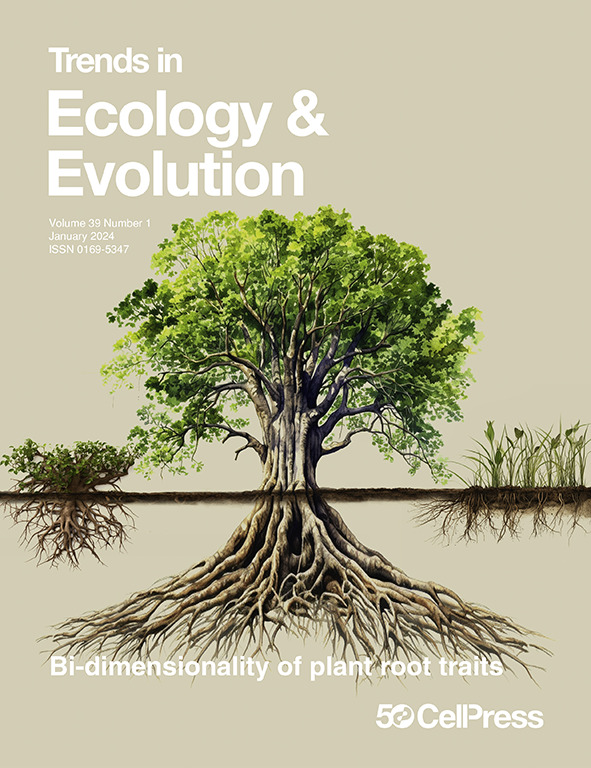雨林生态的阴影深埋在时间里。
IF 17.3
1区 生物学
Q1 ECOLOGY
Trends in ecology & evolution
Pub Date : 2025-10-01
Epub Date: 2025-09-10
DOI:10.1016/j.tree.2025.09.006
引用次数: 0
摘要
我们对南半球始新世古生物多样性的生态学和进化的认识仍然有限。Agnihotri等人最近报道了Umarsar褐煤矿的中始新世(~ 41 Ma)热带生态系统,发现800多种节肢动物和118种藓类动物在温暖潮湿的条件下茁壮成长。印度向北漂移和有利的气候推动了多样化,为气候变化下的现代热带森林保护提供了见解。本文章由计算机程序翻译,如有差异,请以英文原文为准。
Rainforest ecology in the shade of deep time.
Our understanding of the ecology and evolution of Eocene paleobiodiversity in the Southern Hemisphere remains limited. A middle Eocene (∼41 Ma) tropical ecosystem from the Umarsar Lignite Mine, recently reported by Agnihotri et al., revealed over 800 arthropods and 118 palynomorph species thriving in warm, humid conditions. The northward drift and favorable climate of India drove diversification, offering insights for modern tropical forest conservation amid climate change.
求助全文
通过发布文献求助,成功后即可免费获取论文全文。
去求助
来源期刊

Trends in ecology & evolution
生物-进化生物学
CiteScore
26.50
自引率
3.00%
发文量
178
审稿时长
6-12 weeks
期刊介绍:
Trends in Ecology & Evolution (TREE) is a comprehensive journal featuring polished, concise, and readable reviews, opinions, and letters in all areas of ecology and evolutionary science. Catering to researchers, lecturers, teachers, field workers, and students, it serves as a valuable source of information. The journal keeps scientists informed about new developments and ideas across the spectrum of ecology and evolutionary biology, spanning from pure to applied and molecular to global perspectives. In the face of global environmental change, Trends in Ecology & Evolution plays a crucial role in covering all significant issues concerning organisms and their environments, making it a major forum for life scientists.
 求助内容:
求助内容: 应助结果提醒方式:
应助结果提醒方式:


